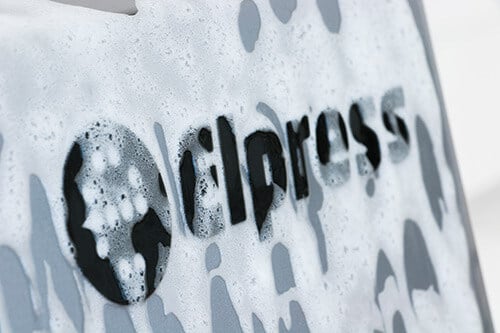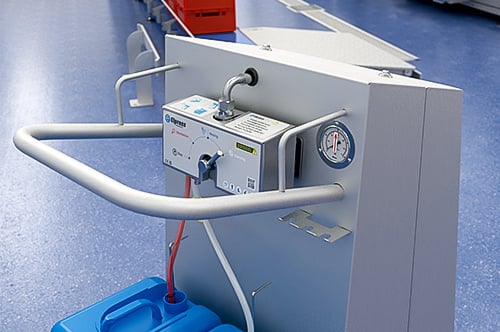
Cleaning systems are essential for companies that operate in environments subject to strict hygiene and quality standards. A well implemented cleaning process not only helps to ensure product safety, but also contributes to the efficiency and service life of the equipment being used. Open the brochure or download the selection plan for more information.
Open the brochureDownload the selection planThe term cleaning systems refers to the process involving the thorough cleaning and disinfection of production environments, equipment and infrastructure across a wide range of industries. The aim is to maintain a high level of hygiene and comply with strict regulations in the areas of food safety and production efficiency. Cleaning machines focus on removing dirt, bacteria and other contaminants that could compromise product quality and safety.



Industrial cleaning is often performed in three main steps:
1. Rinsing: Rinsing is the first step in the cleaning process and involves the removal of loose dirt and dust from surfaces and equipment. Doing this makes the next steps in the process more efficient. It helps to prepare surfaces for deeper cleaning without the need for aggressive cleaning agents and creates a clean starting point for the rest of the process.
2. Foam cleaning: In this phase, a foam cleaner is applied to loosen stubborn dirt such as grease, proteins and bacteria. The foam ensures that the cleaning agent remains on the surface longer, resulting in intensive and thorough cleaning. Foam cleaning is ideal for removing organic residues such as grease and proteins, as the foam remains on the surface longer and is therefore more effective at loosening dirt. This ensures deeper cleaning, even in hard-to-reach places.
3. Disinfecting: The last step is disinfecting, in which chemicals are used to kill bacteria, viruses and other micro-organisms. This is crucial in sectors where hygiene is essential, such as the food industry and pharmaceutical production. Chemical disinfection is necessary to eliminate microorganisms such as bacteria and viruses. This is critically important in environments such as the food industry and the pharmaceutical sector, where absolute hygiene is essential to prevent contamination.


Cleaning machines are often operated at low pressure because this is an effective way to remove dirt without damaging sensitive surfaces. Low-pressure cleaning is also a sustainable choice. Additionally, low pressure is frequently combined with foam cleaning, as it enables deeper cleaning without any of the associated risks. Want to know everything about cleaning systems and the possibilities they offer? Our whitepaper contains all the information in a single place.
Low-pressure cleaning is used in situations requiring gentle but effective cleaning, for example when cleaning surfaces that are susceptible to damage or are only lightly soiled. Examples of low-pressure cleaning:
The advantages of cleaning at low pressure:

Centralised cleaning makes use of a single centralised system for cleaning several production areas, while decentralised cleaning involves the use of separate systems for specific areas. Both methods have their pros and cons, depending on the existing infrastructure and the specific cleaning needs of the business.
Centralised cleaning can be cost-effective for large companies with a lot of cleaning points, while decentralised cleaning offers greater flexibility for smaller or more specialised cleaning processes. When deciding which of these two methods to use, remember to take your company’s infrastructure and your specific cleaning needs into account.

The pressure inside a cleaning machine can vary from low (e.g. 10-30 bar) to high (>60 bar), depending on what has to be cleaned. The choice of operating pressure depends on the kind of dirt, the surfaces to be cleaned and the desired result. Low pressure is often preferred for surfaces that are susceptible to damage, while high pressure is used to remove stubborn dirt. This combination offers flexibility and ensures that the cleaning is both effective and safe.
Cleaning business premises with high or low pressure?
High-pressure cleaning is used on stubborn dirt that is hard to remove and cannot be loosened with low pressure. High-pressure cleaning is especially effective for removing burned-on dirt, grease and other stubborn residues.
Examples of high-pressure cleaning:
Important advantages of high-pressure cleaning:


Regular maintenance is essential for ensuring that an industrial cleaning system remains in tip-top condition. You can do the maintenance yourself or leave it to your employees, but often there is not enough time or knowledge to do this effectively. To provide support with this, Elpress offers service contracts. With a service contract, an Elpress service engineer will visit from time to time, mostly annually but more frequently if necessary, to carry out thorough maintenance on your cleaning machine. This ensures that your system carries on working efficiently and minimises the risk of malfunctions and defects.
